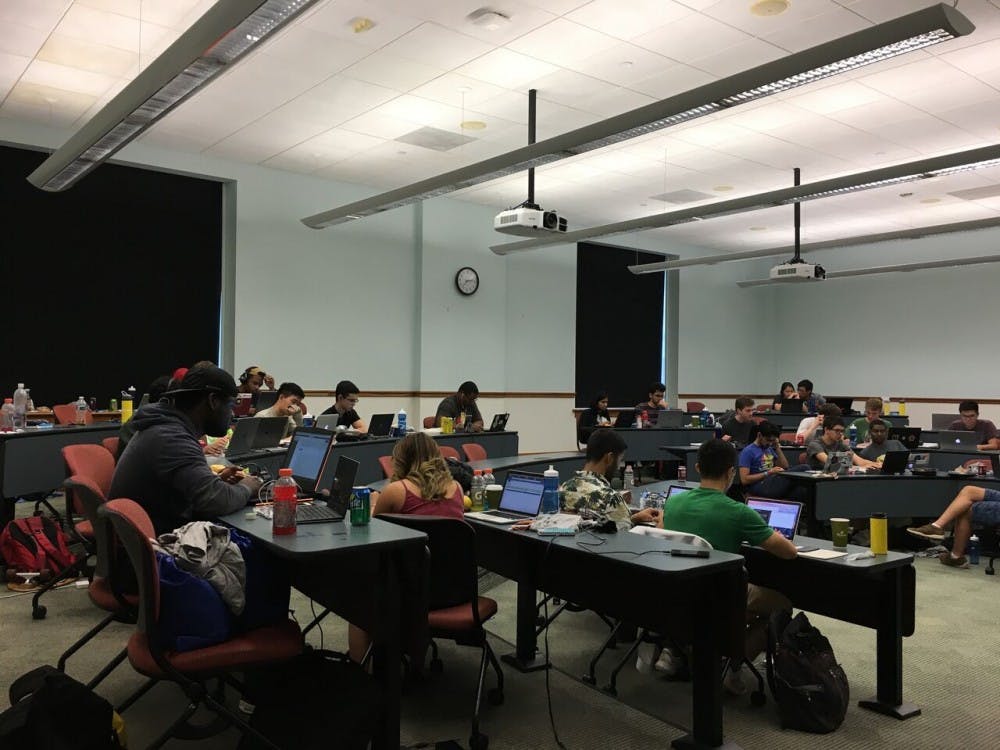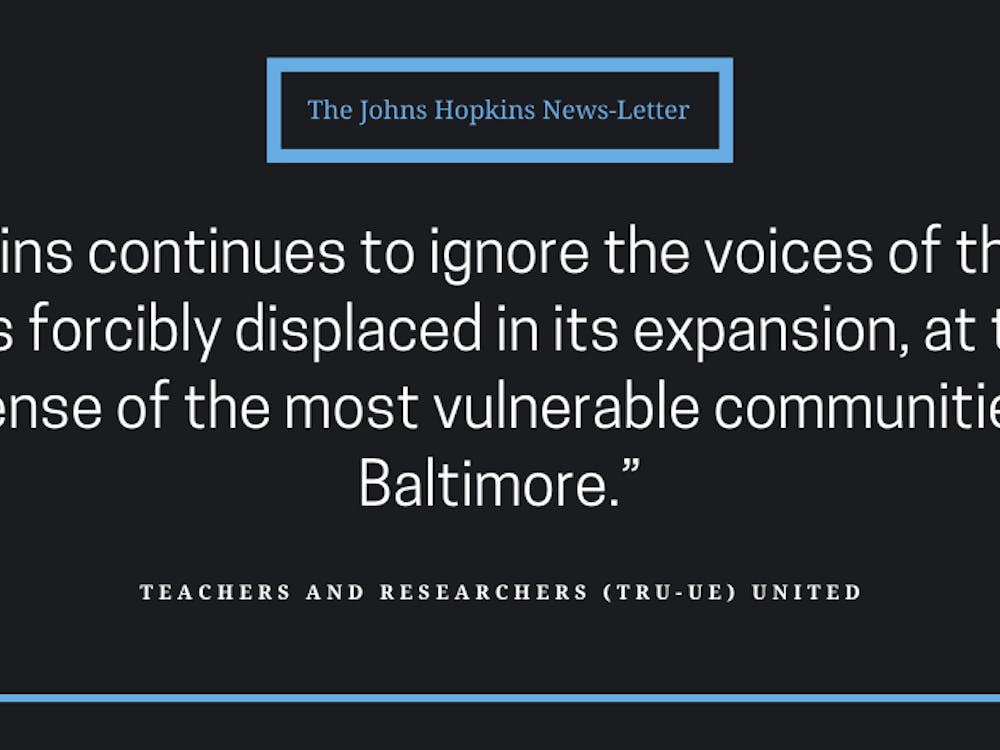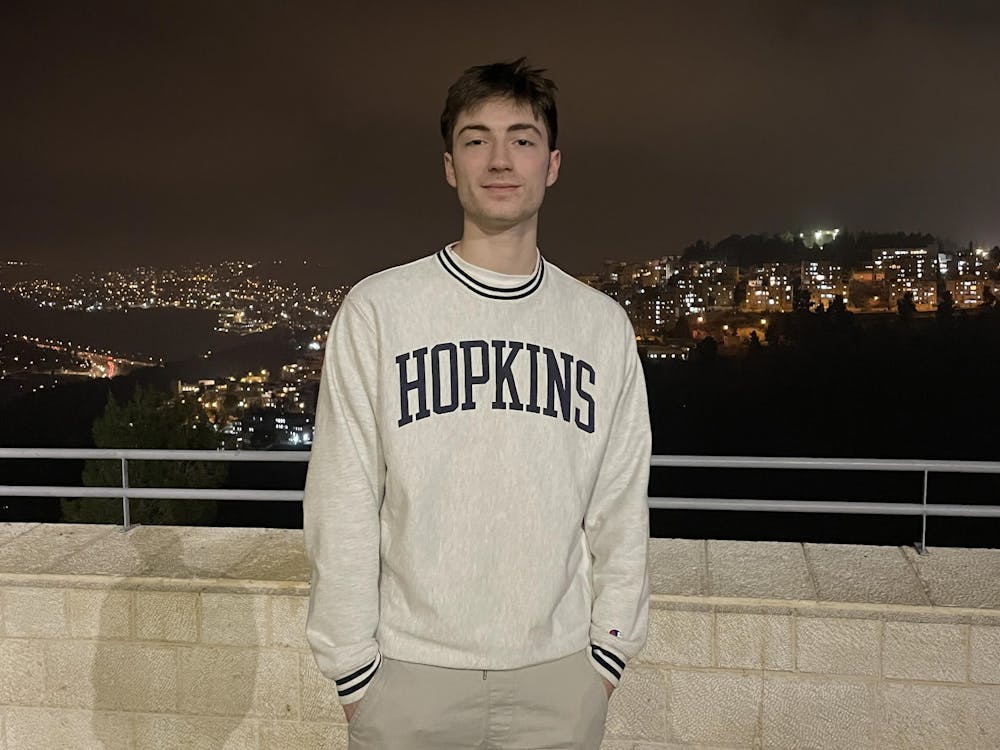College students from around the country came to Homewood campus last weekend to participate in the HopHacks Fall 2017 hackathon. Working in teams, they had 36 hours from 9 p.m. Friday to 9 a.m. Sunday to design and code a technological product.
The event was organized by Major League Hacking (MLH) and had more than 15 company sponsors, including Booz Allen Hamilton, Siemens and Capital One.
According to junior Andrew Wong, a HopHacks organizer, about 330 undergraduate and graduate students from a variety of engineering backgrounds came to the event. Competitors were only allowed to code inside Hodson Hall, use public application programming interfaces (APIs) and were not allowed to bring pre-written code.
He discussed some of the unique features of this year’s event.
“We‘ve had more participants from other universities, and we’ve really reached out to colleges in the area to encourage collaboration in the Baltimore community,” he said. “We’ve had more sponsors than last year.”
Japneet Singh, a freshman from University of Maryland, College Park, explained the purpose of the event.
“It’s a hackathon, so we’re interested in making new products and creating new ideas,” Singh said.
A group consisting of Hopkins sophomores Noah Naparst, Christian Cosgrove and Jason Li and sophomore Eric Zelikman of Stanford University won the first place prize of $1,024. Their program, Seer, is an image-recognition program that can identify objects such as people and elephants from a live feed.
A team of Hopkins freshmen Evan Mays, Nathan Vallapureddy, Daniel Qian and Nathan Kaleida took second place, winning the $512 prize. They created an app called SpotMe that allows users to find someone nearby who is able to lend them cash. The app has security features that favor public places for the exchange and a reporting feature for bad encounters.
The third place prize of $256 went to Facial and Vocal Emotion Analysis (FaVEA), created by senior Mengying Pan, Northeastern University freshman Rabin Acharya, Northeastern University graduate student Srimannarayana Potluri and Drexel University junior Suparit Sunpongsri.
They believe the app can be used to improve public speaking skills by giving the user feedback based on facial expressions and vocal tone to help diagnose emotional disorders.
Abhilash Balachandran, a Master’s student in robotics at Hopkins, was pleased with his first HopHacks experience.
“Obviously I’ve always wanted to make something,” he said. “In HopHacks... we’re under pressure, but they give you things like data, hardware.”
He added that although a HopHacks competitor needs some computer science experience, enthusiasm is important as well.
Jerry Qian, a freshman computer engineering major at University of Maryland, College Park, enjoyed working with his older brother in his first hackathon competition.
“My brother’s been doing hackathons and he’s asked me to join him. I’m into making stuff, and I think it’s pretty cool. It’s forcing me to learn stuff,” Qian said.























Please note All comments are eligible for publication in The News-Letter.